Question
We are writing to you from Switzerland with a last hope that you can may be help with a piece of advice our Frilled Lizard.
Last Monday at 6 o'clock in the morning we found our frilly on the ground of the vivarium lying on her back with closed eyes, which was shocking. Straight we have checked if she is alive and Thanks God she was, but her her back legs and tail were paralyzed.
At 8 o'clock same day we were already at Vet's place checking up, making x-ray, trying to find out what happened. Eventually vet had a suspect for deficiency of Vitamin D3...and made her an injection. When we got home we started searching all over the internet and books what might caused this sickness. What happened is that the guy from the animal shop who sold this lizard 9 months ago did not fixed the cage write, he put the UVB lamp behind the plastic glass, which means that all the LIFE NECESSARY uv rays never passed through...We straight away modified the cage to get a proper light.and Apart from this Temperature is 32C on the hot side and 25 on the shade side, humidity is from 60% to 70%, we were feeding her crickets with Ca and Vitamins supplements 2 times per week, and by the way it is a male of 1,5 years old, weight 36 grams!!!he never ate a lot.And since he got sick does not eat AT ALL!!
The day before yesterday We also mixed 4 big crickets with water and calcium and gave to him through disposable syringe to the mouth.Yesterday he finally managed to poop whatever he ate a week and half ago,and the consistency was kind of liquid.Today the same kind of liquid came out twice.
over this last week since he had an injection his legs started moving, not like it used to be but still better then nothing.Tail is moving sometimes as well.Also he is opening his frilled from time to time and stay with his mouth open for couple of seconds and repeats this action for about 10 minute...We are VERY VERY worry and do not know if we are doing everything right.We love our lizard so much!
Today he looked very pity and very sick and we went to the vet to see if it is going better and Doctor said that his condition is quite critical and also that Frilly still has a chance to survive.At the end of the visit he made another injection of vitamins E and A. Personally as far as we live in Switzerland local vets are more common with cats and dogs, but not that much into lizards, especially Frilled lizard.We are already quite lucky that this guy has an experience and knowledge about reptiles.
We are praying every day and night.
Hopefully you will find a time to read this e-mail and looking forward to hear from you asap.
Kind Regards,
Eugenie& Manu Schoepfer
AnswerHi Eugenie & Manu,
I really don't know much of anything about frilled's.... many times the same symptoms are present in other lizards. When a lizard gets metabolic bone disease(from lack of proper uvb, etc) it doesn't happen over night so with getting them on the right track, it takes time. With MBD, in many cases, it does reverse when the care changes are made.
What you describe can be lack of proper uvb....(info below) food not being properly gut loaded prior to feeding to your frilled...when the insects aren't fed good foods for at least 24-48 hours prior to your frilled eating the insects, there is much lacking in nutrition. To gut load the insects you can feed them vegetables, greens, grains, cereals...the gel stuff is not a food..its basically only water. A blockage can also be the problem, which can paralyze their hind legs. A blockage can be caused from eating the substrate(litter, sand, bark) while chasing his food. It can also be caused by internal parasites..with a partial blockage, he may be able to pass some liquids, but not much in the way of solids. Dehydration can also cause problems. Your humidity levels are fine...temperatures in the basking area(under the uvb and heat need a gradient range of 32-35 degrees C..when the temperatures aren't in the proper range, their foods digest too slow..losing much nutrients.
To measure the temperatures properly, I like to use one of the thermometers that has the probe on the end of a wire. The probe hangs right under the basking light, at the lizards level.
Frilling may just be a sign that he is telling you to back off..its territory!!! If there is no labored breathing with the open mouth...chances are all is normal. You may want to have the vet check inside her mouth to make sure there is nothing caught there..silly things like human hair get into their mouths causing problems.
I am including some info I wrote on UVB.
LIGHTING:
Supplying uvb can be done in a few ways. By special lights
that come in fluorescent tubes or special screw in bulbs
(mercury vapor)that are designed to produce uvb and heat.
The tubes do not produce heat. UVB is needed by the reptile to be able to absorb the calcium in the foods they eat.
With out the uvb, they will develop metabolic bone disease.
With the tubes, they must say that they produce BOTH uvb and
uva. The uvb needs to be 5% or higher. Repti Sun 10.0 and the Repti Glo 8.0's are a great source for uvb. The old "favorites" are the repti sun 5.0 or the Iguana light..which are the same tube, just different package.
There are tubes that say ''full spectrum'' but they do not produce any uvb.
These need to be positioned 6-8 inches over the reptile for the 5% and 8% and 8-10 inches for the 10% so
that they get the uvb that is needed. The tubes need to be replaced every 6-9 months as that they stop producing UVB long before they stop producing light.Using a fixture that holds two uvb tubes of at least 3 feet in length will provide adequate uvb for your lizard. There has been new studies that have proven that compact uvb lights, both the spiral/coil type and the ones that look like long "U's" laying on their side and a few other brands are causing what basically amounts to snow blindness in reptiles. To read more on this, you can go to http://www.uvguide.co.uk/index.htm
On the mercury vapor , they also produce heat. They also
produce the uvb and uva. The best on the market now are the
Mega Rays.(http://www.reptileuv.com) The distance from these are greater than the uvb tubes and the directions must be followed that
are listed for the light. When using the mercury vapor
lights, you don't need to have one light for uvb and one for
heat. The Mercury vapor lights provide both.
For daytime heat, if using the tube uvb, regular household
incandescent light bulbs produce heat. The wattage will
depend on the size of your lizards enclosure. and the room temperature.Of course, the best uvb is from the
sun and if you are in an area that you are able to take your reptile outside in a proper enclosure, (Never a tank or enclosed, solid cage)
If a fecal check was not done for internal parasites, I suggest that one be done... also you can try offering one of the products below to help with boosting gut bacteria.
The reason for one of the below products is to replace the iguanas gut bacteria(probiotics) which are needed for digestion. In the wild, some species of hatching's first "meal" is the poop of an adult ...this is how they get their gut bacteria to a good level...in captivity most use products such as:
bene bac...labeled for birds, approved for reptiles.
nutri bac
acidolophliz+
or plain, human grade acidolophus...... one capsule will dose for at least 3 days in a row.
BeneBac ..most larger pet stores should carry it...especially if they have birds...
Acidophiliz+ I think PetsMart carries it..if not....on line at www.reptilesupply.com
If you are not happy with the vet you now have, you can try searching the following links for vets in your area:
http://www.herpvetconnection.com
http://www.arav.org/ECOMARAV/timssnet/amm/tnt_mdsearch.cfm
http://www.anapsid.org/vets/

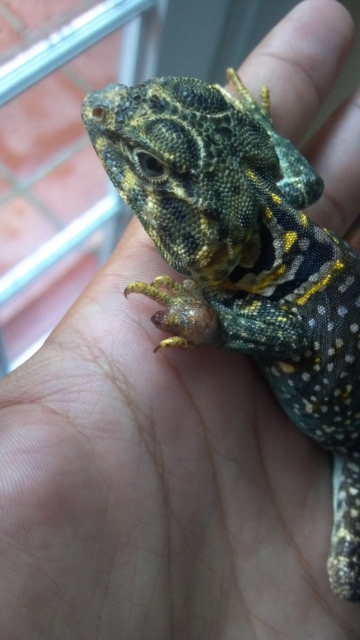 Collared lizard
QuestionQUESTION: Hi, My collared lizards finger has fa
Collared lizard
QuestionQUESTION: Hi, My collared lizards finger has fa
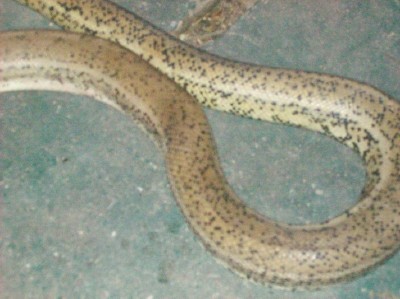 What snake is this?
QuestionWhat kind of snake is
QUESTION: We foun
What snake is this?
QuestionWhat kind of snake is
QUESTION: We foun
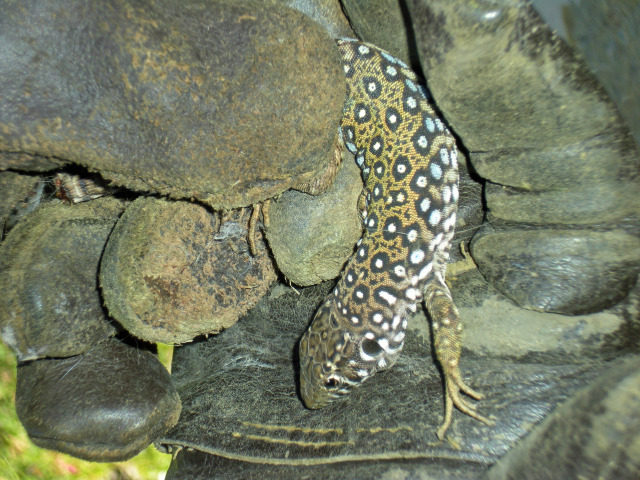 Sand Lizard
QuestionUnknown lizard
QUESTION: Could you help
Sand Lizard
QuestionUnknown lizard
QUESTION: Could you help
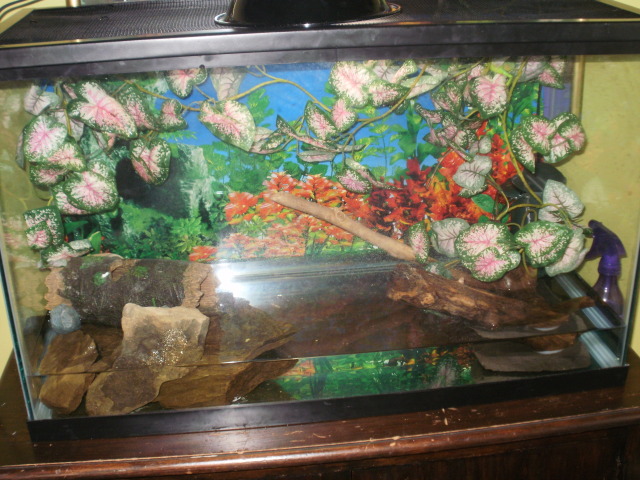 parasite in water dragon
QuestionQUESTION: My daughter has a Chinese water drago
parasite in water dragon
QuestionQUESTION: My daughter has a Chinese water drago
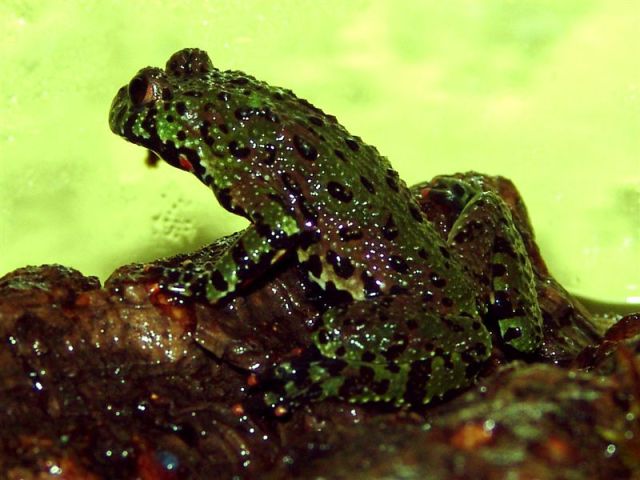 My water dragons enclosure and what they eat
QuestionQUESTION: Hi, partner recently had a baby and s
My water dragons enclosure and what they eat
QuestionQUESTION: Hi, partner recently had a baby and s